Throttle Body Problem Signs and Solutions
Tired of your throttle body being problematic, and you can’t seem to find out why? It’s okay; things like these are technical and sometimes require professional help.
But other than that, I got you! Today I will be telling you everything important about the throttle body, from how it works to signs of a problematic throttle and also how to fix it!
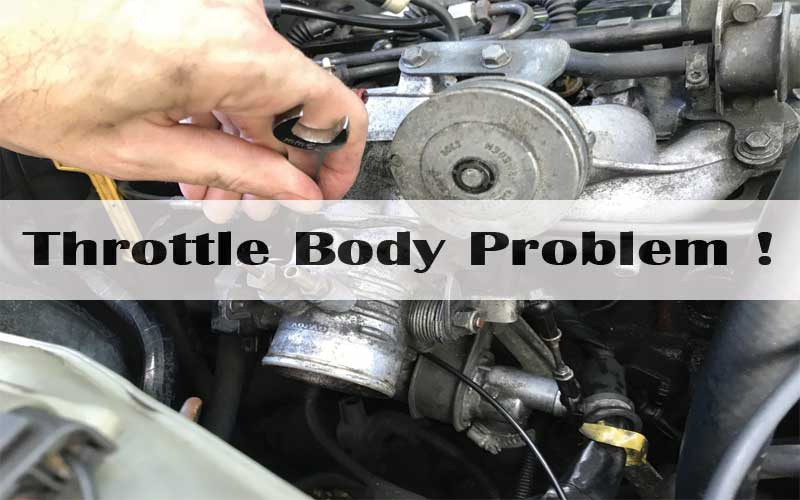
Maintaining a throttle body is hard but not impossible; a little bit of work and dedication, and you’re good to go for a very long time!
So, let’s start and read everything you need to know about throttle body, so if you ever get caught up in a situation with a throttle body, you would know what to do!
You’ll better brace yourself for all the knowledge I will be throwing your way! Sit tight, and let’s start.
What is a throttle body?
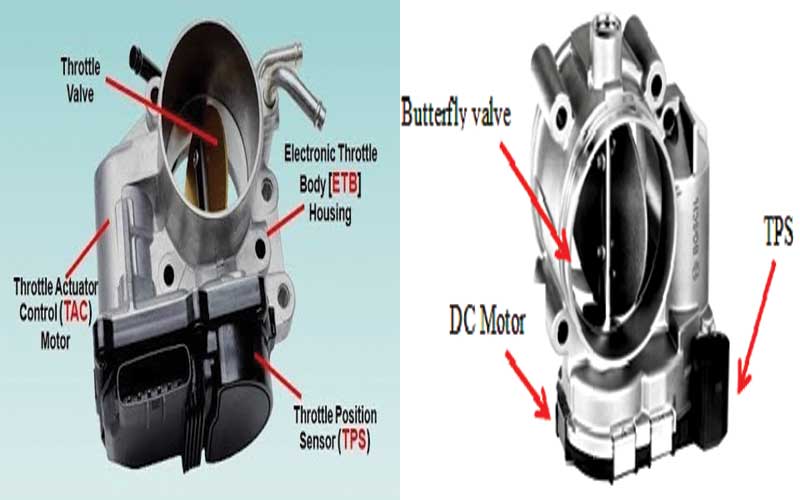
The throttle bottle is one of the most important parts of an engine. A throttle body is constructed with a metal casing. It directs the airflow of an engine.
Usually, most of the vehicles only have a single throttle body installed, but other than that, many other heavy vehicles that require more power use more than one throttle body using each one on each cylinder.
Some of the car owners also like to use two smaller throttle bodies instead of one larger one.
A usual throttle body, as I said before, is constructed of metal and has a tube going parting from the middle of it. This tube is then blocked or covered by the throttle plate.
A throttle plate also consists of a position sensor, typically that is found next to the throttle linkage. The throttle position sensor enables the throttle plate to be connected to it.
How does a throttle bodywork?
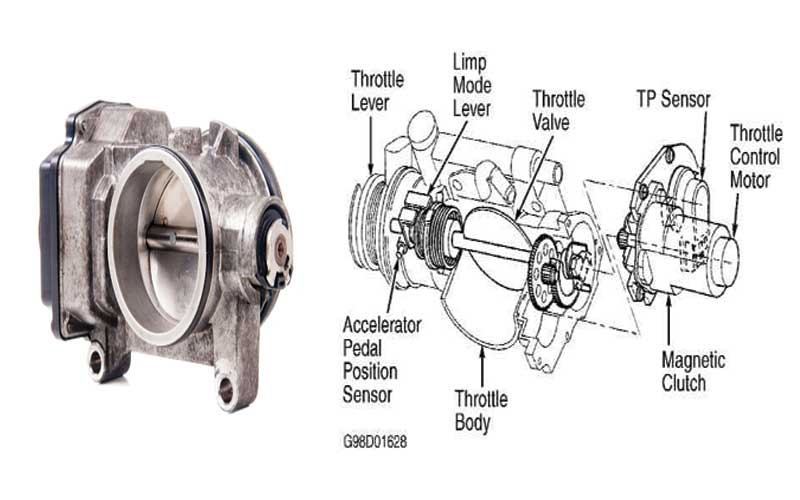
Usually found sandwiched between the intake manifold and the air filter system, the throttle body consists of a throttle system which, governs the spark ignition system: airflow.
This airflow then supports and regulates the air-fuel mixture ratio that is required to ignite an engine to life.
The basic regulator which is used for throttle pressure usually comes in the shape of the throttle body temperature sensor, which helps measure the temp of the air-fuel mixture entering the fuel injection area of a car.
The throttle body is mostly controlled by the throttle plate, which is also known as the butterfly valve; the airflow is then regulated by the driver by pressing on the acceleration pedal, which is installed in your car.
When you press on the acceleration, it tells the sensor on the throttle body, which then allows more air into the combustion chamber while increasing the REM and output of power. As a result, all this makes your car go faster.
Signs of a problematic throttle body
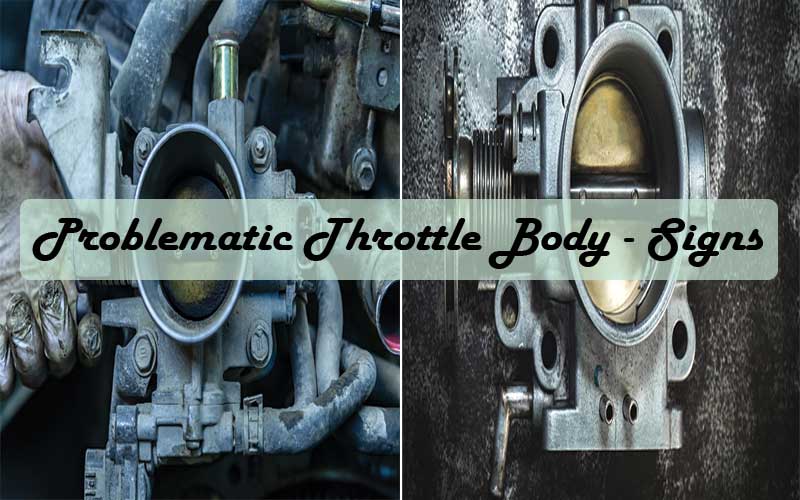
Liver every other everyday use thing, throttle bodies also get worn out by time. Sometimes because of the excessive use it put into, other times because it isn’t being taken enough care of, or simply because it got old with time; either way, you will eventually find yourself at a stage where you will have to either fix or replace your throttle body.
Now, before you completely replace your throttle body, you first need to figure out why and where the problem is lying.
By identifying the problem in your throttle body, it will be easier for you to look for signs of a problematic throttle in the future.
Problematic throttle bodies can show a lot of signs, and a bunch of things can cause it. Here’s a list of 6 things that can cause your throttle body to fail or become problematic.
Grime Build Up
One of the main reasons for your throttle body to stop working is the dirt that would become stored up. Like every other part in a vehicle, the throttle body also needs cleaning up; the storage of dirt and grim inside the parts of the throttle body, which is also known as coking, can cause your throttle body to become problematic.
When grim and dirt build’s up in the parts of a throttle body, it creates a rough surface, which disturbs the air-fuel flow and affects your engine work.
Other than that, carbon deposits can cause a rough surface, which will also cause the throttle to stop working.
Engine Light
When the performance of the throttle body is not up-to, the required level, the electronic throttle control system, will update the engine which, then will blink the light on your dashboard.
Although there are a few reasons that could make your dashboard engine lights light up, it’s probably a smart move to always check your throttle body whenever you see illumination on your dashboard.
Poor Fuel Economy
Make sure to keep a check on how many miles your car can run; make a note of how many miles your car covers until it’s fully empty.
When you work out your average miles per gallon, cross-check it, and if it’s more than 15%, the high chances are that you have a clogged throttle body.
Slow or uneven Acceleration
When you start your vehicle, Press down on your acceleration; if your car isn’t picking up the power as it should, or if it is taking more time than usual to pick up speed, well, your throttle body is in trouble. It can either be clogged up in dirt or the carbon built up in the inner walls.
High or super low Idle
An engine with an idle that goes up and down might have a vacuum leak or, who knows, maybe be a torn intake hose. If you observe a consistent high idle, it probably means that the IAC valve is sticking open, or maybe your throttle needs adjusting.
If your car is stalling after it comes to a stop, or when the acceleration is pressed down rapidly, it’s probably all the dirt that’s stuck inside of your throttle body; that is another sign of a problematic throttle. Dirt and carbon built up to cause the fluctuation in idle speed.
Electrical Problems
Since we are living in a modern world now, most of the modern world cars are dependent on computerized controls and connections.
As you know, an electronic sensor in a throttle system works as the nervous system of the throttle body. If it gets caught up in too much dirt or carbon built up, it can cause the car to go in a reduced power mode.
Read Also: Throttle Position Sensor Cleaning
How to Fix a problematic throttle body
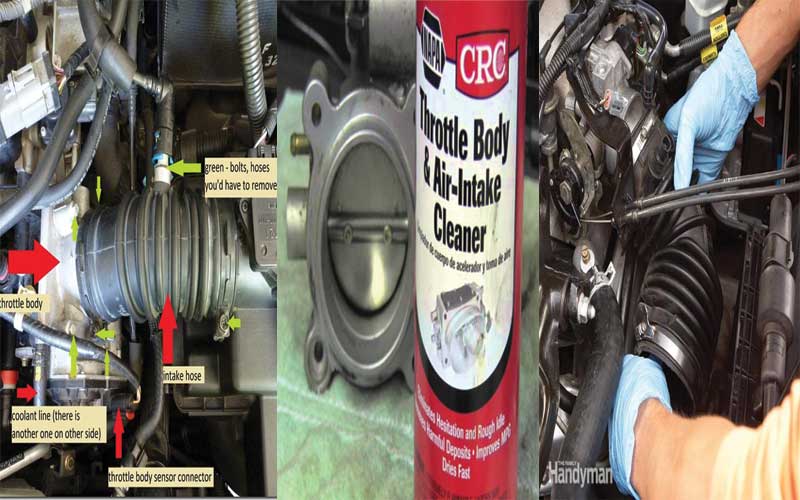
Now that I have listed all the problems you are likely to face if you own a vehicle, I will also be listing solutions on how to fix a problematic throttle body if you have or are experiencing any of the problems on this list. Well, keep reading; you will know what to do.
Changing Hose
The throttle body usually works by getting a sensor from the acceleration pressure. If there are any leaks found in the electric connection which connects to the throttle body.
The air won’t be getting into the amount sensor properly, for which you will have to change your hose pipe and insert a new one that perfectly connects the engine to the throttle
Clearing Rust
If your throttle body has too much rust built, it will not create smooth airflow. So, you should check up on your throttle body if you see any problems and clear out all the rust and dirt stuck on the inner walls.
Replacing the Throttle
Most of the times, whether you like it or not, replacing the throttle system is the only option you will have left. Although it may seem like that, replacing a throttle body is not as hard as it looks or sounds.
Reset the Throttle
Another thing a lot of vehicles owning people face is that sometimes the throttle itself has no issues but still shows signs of a failed or broken throttle; in that case, you can try and reset your throttle system.
Since, as I already told you throttle system has an electronic sensor which works as a nervous system, and because it is all wires and connections.
Sometimes those electrical connections can get the codes wrong or can have trouble in connecting, these things may cause your throttle system to show signs of a broken throttle body.
In cases like these resetting, a throttle system is what you need to do. You can either do that yourself, or you can get a professional to help you out.
Final Thoughts
Now that we have reached the end of the article, I am sure by now you know all about the throttle body, from what it is to how it works and, most importantly, how to identify a broken or problematic throttle body and how you can fix it or get it fixed!
If you still have any questions regarding anything related to the throttle body, I suggest you go read the article once again. Good luck!
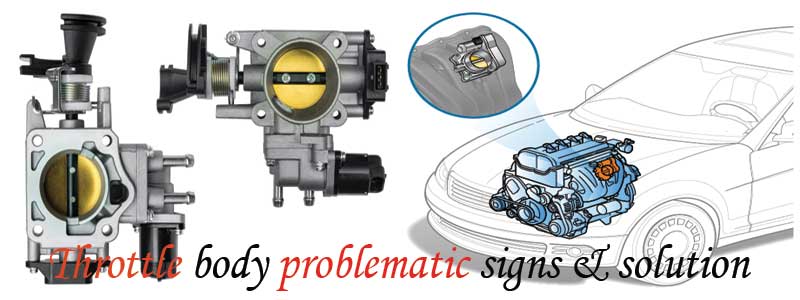

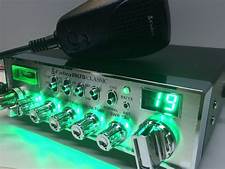



Post Comment